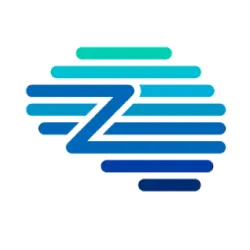CFOs ask tough questions. When you walk into the boardroom requesting budget for autonomous sourcing technology, you need more than buzzwords about AI transformation. You need hard numbers, clear timelines, and proof that this investment will deliver measurable returns. The good news? Organizations implementing autonomous sourcing for tail spend management are seeing results that make the business case almost write itself.
TL;DR
- The business case for autonomous sourcing is driven by measurable ROI, including 4.5–9% tail spend savings and up to 75% reduction in manual effort.
- Real-world examples show enterprises achieving €13M in annual savings from direct cost reductions, compliance improvements, and efficiency gains.
- Strategic benefits go beyond cost—teams shift from 80% tactical to 60% strategic work, enabling supplier innovation and stronger category strategies.
- Risk mitigation improves with automated policy enforcement, audit trails, and early alerts for supplier disruptions.
- A phased implementation with pilot rollouts, change management, and clear metrics ensures early wins and long-term value realization.
The Numbers Don’t Lie: Quantifying Autonomous Sourcing ROI
Real-World Performance Benchmarks
Leading enterprises are achieving substantial returns from autonomous sourcing implementations. Here’s what the data shows for tail and tactical spend management:
Direct Cost Savings
- 4.5-9% average savings on tail spend through automated negotiations
- 15-25% reduction in processing costs through automation
- 30-50% decrease in maverick spending through policy enforcement
- 5-10% improvement in contract compliance rates
Operational Efficiency Gains
- 60-75% reduction in manual effort for routine purchases
- 40-60% faster cycle times from request to delivery
- 85%+ improvement in user satisfaction scores
- 90% reduction in processing errors
Read more: The Race is On: Why Early Adopters of Autonomous Sourcing Will Win Tomorrow’s Markets
The €190M Case Study Framework
Consider a mid-to-large enterprise with €190M in annual tail spend. Using conservative estimates from real implementations:
Annual Financial Impact
- Direct savings: €190M × 5% = €9.5M annually
- Processing cost reduction: €2M annually (reduced FTE requirements)
- Compliance improvements: €1.5M annually (reduced maverick spend penalties)
- Total quantifiable benefit: €13M annually
Investment Requirements
- Technology platform: €800K annually
- Implementation services: €300K one-time
- Change management: €200K one-time
- Total 3-year investment: €3.4M
Net ROI: 280% over three years, with payback in 7-9 months.
Beyond the Spreadsheet: Strategic Value Creation
Resource Reallocation Benefits
Procurement Team Transformation The most significant benefit often isn’t cost reduction—it’s capability enhancement. When autonomous systems handle 70-80% of tail spend transactions, procurement professionals can focus on activities that truly move the needle:
Strategic Activities Enabled
- Supplier innovation programs that drive product development
- Supply chain resilience planning that prevents business disruption
- Category strategy development that captures market opportunities
- Cross-functional partnerships that align procurement with business goals
Real Impact on Team Productivity Organizations typically see procurement teams shift from 80% tactical work to 60% strategic work within 18 months of implementation. This translates to better job satisfaction, reduced turnover, and enhanced business credibility.
Watch On-demand Webinar: Autonomous Sourcing: Speed, Savings & Strategic Edge in Procurement
Risk Mitigation Value
Compliance and Control Benefits
- Policy enforcement becomes automatic rather than manual
- Audit trail creation provides complete transaction visibility
- Supplier performance monitoring identifies issues before they impact operations
- Budget control prevents overspending through real-time validation
Supply Chain Resilience
- Supplier diversification happens automatically through intelligent sourcing
- Performance monitoring catches declining supplier capabilities early
- Alternative sourcing options are continuously evaluated and maintained
- Risk alerts provide early warning of potential disruptions
Building Your Business Case: A Step-by-Step Framework
Step 1: Baseline Assessment
Current State Analysis Start by documenting your existing tail spend management costs and performance:
Key Metrics to Establish
- FTE allocation: How many people spend how much time on tail spend?
- Processing costs: What does it cost to process different types of requests?
- Cycle times: How long does it take from request to delivery?
- Error rates: How often do manual processes create problems?
- Compliance gaps: Where are policies not being followed?
Hidden Cost Identification
- Maverick spending: Purchases outside approved channels
- Manual effort: Time spent on routine, repetitive tasks
- Delays and bottlenecks: Impact on business operations
- Supplier proliferation: Costs of managing too many vendors
Step 2: Opportunity Quantification
Savings Potential Calculation Use industry benchmarks adjusted for your specific context:
Conservative Estimates (Year 1)
- Direct negotiation savings: 3-5% of tail spend
- Process cost reduction: 20-30% of current processing costs
- Compliance improvement: 2-3% reduction in maverick spending
- Efficiency gains: 40-50% reduction in manual effort
Optimistic Targets (Year 3)
- Direct negotiation savings: 6-9% of tail spend
- Process cost reduction: 50-60% of current processing costs
- Compliance improvement: 5-7% reduction in maverick spending
- Efficiency gains: 70-80% reduction in manual effort
Step 3: Investment Planning
Technology Investment Components
- Platform licensing: Annual subscription based on spend volume
- Integration services: One-time setup for ERP and system connectivity
- Training and adoption: Initial and ongoing user education
- Ongoing support: Technical assistance and optimization
Implementation Timeline and Costs
- Phase 1 (Months 1-3): Foundation setup and pilot categories
- Phase 2 (Months 4-6): Rollout to additional categories
- Phase 3 (Months 7-12): Full deployment and optimization
Addressing Common CFO Concerns
“How Do We Know This Will Work?”
Proof Points to Include
- Reference customer results from similar-sized organizations
- Pilot program data from limited category implementations
- Vendor performance guarantees and success metrics commitments
- Industry analyst validation from trusted research firms
Risk Mitigation Strategies
- Phased implementation that allows for course corrections
- Success metrics with clear go/no-go decision points
- Vendor partnership with skin-in-the-game pricing models
- Change management support to ensure user adoption
“What If the Technology Doesn’t Deliver?”
Contingency Planning
- Performance benchmarks with clear success criteria
- Vendor accountability through service level agreements
- Exit strategies that protect data and investment
- Alternative approaches if primary strategy needs adjustment
Success Measurement Framework
- Monthly metrics for early performance indication
- Quarterly reviews for course correction opportunities
- Annual assessments for strategic value realization
- Continuous improvement processes for ongoing optimization
Implementation Strategy for Maximum ROI
Phase 1: Quick Wins and Foundation Building
Category Selection Criteria Focus on categories that will deliver fast, visible results:
- High volume, low complexity items like office supplies
- Frequent purchases with established supplier relationships
- Clear policies that can be easily automated
- Measurable outcomes that demonstrate value quickly
Success Metrics for Phase 1
- User adoption rate: Target 80% within 90 days
- Processing time reduction: Target 50% improvement
- Error rate decrease: Target 75% reduction
- User satisfaction: Target 85% positive feedback
Phase 2: Scale and Optimization
Expanded Category Coverage
- Professional services with standardized requirements
- MRO supplies with predictable usage patterns
- IT equipment with established vendor relationships
- Travel and expenses with clear policy frameworks
Advanced Capability Deployment
- Supplier rate harmonization across business units
- Dynamic pricing optimization based on market conditions
- Predictive analytics for demand forecasting
- Advanced reporting for strategic insights
Measuring and Communicating Value
Key Performance Indicators
Financial Metrics
- Cost avoidance through automated negotiations
- Process cost reduction through automation
- Compliance improvements reducing maverick spend
- Resource reallocation value from strategic work
Operational Metrics
- Cycle time improvement for faster business support
- Error rate reduction for better user experience
- Supplier performance enhancement through monitoring
- User satisfaction improvement through better processes
Stakeholder Communication Strategy
Executive Dashboard Elements
- Monthly savings tracking against targets
- Operational efficiency improvements and trends
- Strategic initiative progress enabled by resource reallocation
- Risk mitigation achievements and compliance improvements
Success Story Documentation
- Before and after comparisons with specific examples
- User testimonials highlighting improved experience
- Business impact stories showing operational improvements
- Future opportunities identified through data insights
Common Implementation Pitfalls and How to Avoid Them
Underestimating Change Management
The People Challenge Technology implementation is only 30% of the success equation. The other 70% is getting people to use it effectively:
Critical Success Factors
- Executive sponsorship that demonstrates commitment
- User training that builds confidence and competence
- Communication that explains benefits clearly
- Support systems that help users succeed
Overestimating Initial Benefits
Reality Check on Timelines
- Month 1-3: Foundation building, limited savings
- Month 4-6: Early results, building momentum
- Month 7-12: Full benefits realization
- Year 2+: Optimization and advanced capabilities
Setting Realistic Expectations
- Gradual rollout allows for learning and adjustment
- Conservative estimates prevent disappointment
- Success celebration builds momentum and support
- Continuous improvement drives long-term value
The Competitive Advantage Window
First-Mover Benefits
Organizations implementing autonomous sourcing early gain several advantages:
- Process optimization before competitors catch up
- Talent attraction through modern, efficient operations
- Supplier relationships enhanced through consistent, fair treatment
- Market intelligence from comprehensive data analytics
The Cost of Delay
Opportunity Cost Calculation Every month of delay represents:
- Missed savings on routine purchases
- Continued inefficiency in manual processes
- Competitive disadvantage vs. early adopters
- Team frustration with outdated systems
Conclusion
The business case for autonomous sourcing isn’t just compelling; it’s essential. Organizations that continue manual tail spend management are essentially choosing to subsidize inefficiency while their competitors capture value through intelligent automation.
The math is straightforward: modest technology investment delivers substantial returns through direct savings, efficiency gains, and strategic capability enhancement. But the real value lies in transforming procurement from a cost center focused on transactions to a strategic partner driving business value.
The question isn’t whether autonomous sourcing will deliver ROI, it’s whether your organization will be early enough to capture first-mover advantages or late enough to be playing catch-up. In a market where agility and efficiency determine competitive position, autonomous sourcing isn’t just a nice-to-have technology upgrade; it’s a strategic imperative.
Related Reads:
- Building a Case for Strategic Sourcing Solutions
- Transforming Source-to-Pay with AI: A Proven ROI Guide
- How Early Adopters of Autonomous Sourcing Are Shaping the Future
- Whitepaper: Rethinking Intake Management: From Gatekeeping to Intelligent Orchestration
- Beyond Dashboards: Why Visibility Alone Is Not Strategy
- What Makes an Autonomous Negotiation Agent Truly Intelligent?
- Intelligent Intake is the Gateway to Autonomous Negotiation
- The Hidden Cost of Tail Spend: Why Manual Negotiation Doesn’t Scale
- How to Write an Effective RFP for Autonomous Sourcing











































